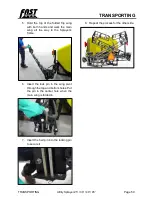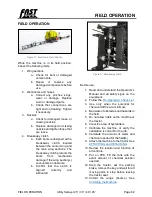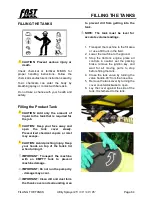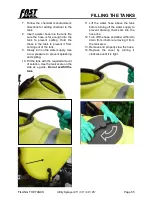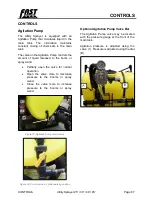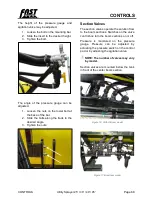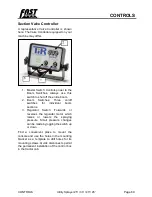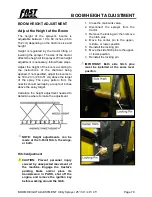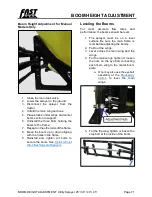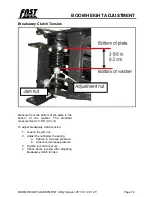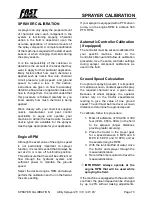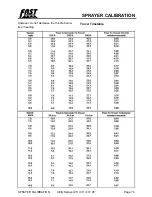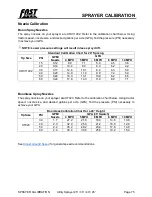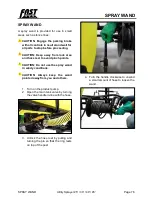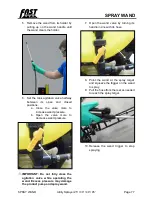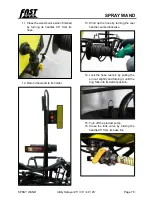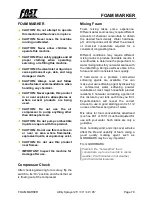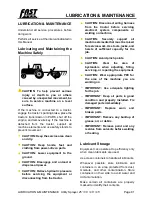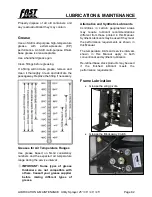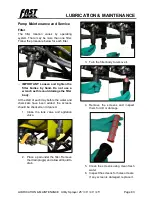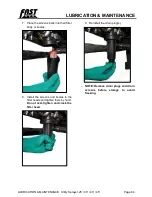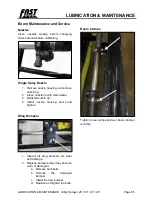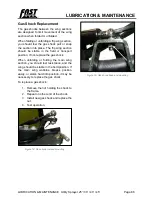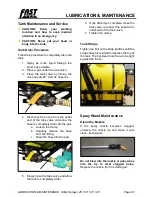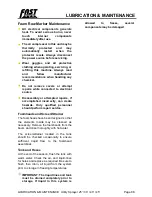
SPRAYER CALIBRATION
SPRAYER CALIBRATION
Utility Sprayer 25' / 30' / 40' / 45'
Page 73
SPRAYER CALIBRATION
A sprayer can only apply the proper amount
of chemicals when each component in the
system is functioning properly. Chemical
action in the field is dependent upon the
accurate application of minute amounts of
the spray compound. A complete calibration
of the machine is required at the start of each
season or when changing chemicals during
the spray season.
It is the responsibility of the customer to
determine the amount of chemical that they
want to apply for their particular application.
Many factors affect how much chemical is
applied such as nozzle flow rate, chemical
circuit pressure, pump speed, and ground
speed, to name a few. In this section,
instructions are given on how to accurately
determine flow rates or application rates and
how to change them. It is recommended that
this procedure is followed carefully so you
know exactly how much chemical is being
applied.
Work closely with your chemical supplier,
nozzle manufacturer, and pest control
specialists to equip and operate your
machine to obtain the best results. Several
nozzle types are available for the sprayer.
Use the type appropriate for your application.
Engine RPM
Although the exact value of the engine speed
is not particularly important to sprayer
function, it is recommended that it always be
set at 2/3 or more off full-throttle position.
This will ensure that there will be sufficient oil
flow through the hydraulic system and
sufficient power to maintain the ground
speed.
Select the desired engine RPM and always
perform the calibration and run in the field at
the same setting.
If your sprayer is equipped with a PTO-driven
pump, run the engine RPM to achieve 540
PTO RPM.
Automatic Controller Calibration
(if equipped)
The controller must be set and calibrated for
your specific machine. Refer to the
Controller’s Manual and follow its calibration
procedure. Use the same controller settings
during sprayer component calibrations as
used in the field.
Ground Speed Calculation
For optimum spraying results, it is important
to maintain a known, constant speed to spray
the required chemical over a given area.
Because of wheel slippage, the operator
cannot rely on the tractor speedometer
reading to give the value of true ground
speed. The unit must be timed over a known
distance to determine true ground speed.
To calibrate, follow this procedure:
1.
Mark off a distance of 100, 200 or 300
feet (328m, 656m, 984m) in the field
to be sprayed (longer distances
provide greater accuracy).
2.
Place the tractor in the proper gear
for a speed between 6 MPH and 8
MPH (9.5 KPH and 13 KPH) and at
the selected engine RPM.
3.
With the tank half-full of water, drive
the tractor and sprayer through the
measured distance.
4.
Record the time required to travel the
measured distance.
IMPORTANT: Always operate at the
engine RPM that will be used while
spraying the field.
If the machine is equipped with the automatic
controller, the ground speed can be changed
by up to 20% without making adjustments.
Summary of Contents for UT3P25
Page 1: ...UT3P25 30 30BL 40 45 H40 H45 UTILITY SPRAYER OWNER S MANUAL...
Page 2: ...820037 25 30 40 45 Utility Sprayer 2023 11 15...
Page 8: ...Table of Contents Utility Sprayer 25 30 40 45 Page 8...
Page 32: ...SAFETY SAFETY Utility Sprayer 25 30 40 45 Page 32 General...
Page 41: ...HYDRAULIC FLOW HYDRAULIC FLOW Utility Sprayer 25 30 40 45 Page 41...

